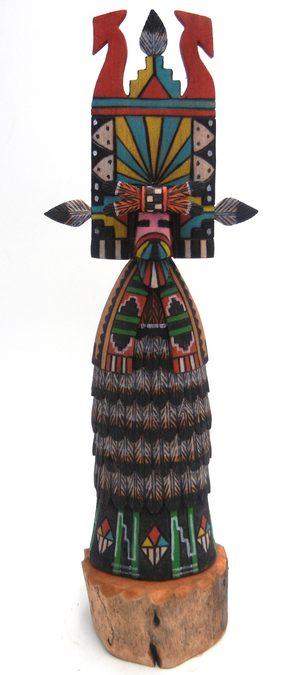Located in modern northeastern Arizona are the traditional territories of what is considered to be one of the oldest Native American tribes in North America, the Hopi. Now encompassing over one and a half million acres, the Hopi reservation is home to a rich art and cultural tradition that includes expert Native American jewelry crafting, carving, pottery making, and painting. Not only does the Hopi community share their unique and beautiful artistic designs with the world, but they also have a fascinating history and culture deeply intertwined with their art.
Hopi History
As one of the oldest tribes to still inhabit their traditional territories, the Hopi are said to be descendants of the Anasazi People. The Anasazi were related to the Mexican Aztecs and are believed to have migrated to what is now present-day Arizona sometime between 5 to 10 thousand years ago. While the geography and environment of the region are commonly thought to be particularly challenging to live in, the survival of the Anasazi and their descendants can partially be attributed to the complex ceremonial calendar that helped them thrive in a region where water was scarce.
Hopi villages are commonly found atop a mesa, an isolated tableland, or flat-topped hill with three steep sides around it. The traditional villages of the Hopi People are called pueblos, and they were situated atop these characteristic mesas. This community was established and continues to be located on the Third Mesa in what is now the Hopi Reservation.
After colonization brought on intense conflict and marginalization in the 16th and 17th centuries, the Hopi People participated in the Pueblo Revolt in 1680. This conflict against Spanish colonists involved all Hopi Pueblos pushing the Spanish out of their occupied territory to El Paso, Texas. Around this time, the Hopi People from Walpi, the First Mesa village, allied with the Tewa people of the Rio Grande to help protect the communities. This, in turn, led to the resettlement of the Tewa People to the First Mesa and is the origin of the Hopi-Tewa community, which continues to reside in the First Mesa to this day and also speaks their own unique language.
In the modern-day, the U.S. Census reports over 18,000 Hopi People still reside in the United States. Like all Native American tribes across what is now the United States, the Hopi People have a long and complicated history with the United States government and have continuously fought for rights and self-governance.
Relationship between the Hopi and American Government
It wasn’t until 1849 that the United States government appointed an official representative for Indian Affairs. The first formal meeting between the Indian Agent, appointed by the white American government, consisted of colonistsand the Hopi People and were conducted in 1850 in Sante Fe and related to potential conflicts between the Hopi People and the Navajo. In response to this threat, the U.S. government established Fort Defiance in 1851.
In 1887, a federally recognized boarding school was established in Keams Canyon specifically for Hopi children. The intention behind this school was to force children to learn the ways of European-American civilization. At the school, children were punished for speaking their own language and participating in traditional practices and cultures. Hopi parents, understandably, refused to send their children to the school, and as a result of low attendance in 1890, the Commissioner of Indian Affairs came to the region with federal troops and threatened to arrest parents who weren’t sending their children.
The Hopi Reservation was formalized in the United States government by President Chester Arthur through executive order passed in 1882. During the 1900s, the U.S. government slowly began to establish schools, missions, and clinics on each of the Native American Reservations. Each reservation was also required to have its own court, police force, and political process. It wasn’t until 1924 that Native Americans were officially declared by Congress as U.S. citizens and had the right to fully participate in the electoral process.
Interesting Facts about the Hopi People
- The name Hopi, or Hopitu as the Hopi People refer to themselves, means “peaceful people.” This idea of peace and calm is deeply rooted in the ethics and spirituality of the tribe, and the foundational ideology of the Hopi People is to live with respect and peace for all things.
- The Hopi community is traditionally organized as a matrilineal society, meaning that children are born into the clan structure of their mother. To honor the paternal line, however, the naming privileges of the child are reserved for the women of the father’s clan.
- Traditionally, a child is named 12 days after birth, and a child may have many names.
- The main income source for the Hopi People in the modern-day comes from natural resources. This includes coal mining and micro-farming. The income earned from Hopi jewelry, art, ceramics, and Kachina dolls also makes up a large portion of the Hopi economy.
Get Native American Jewelry
At Palms Trading Company, we have a wide variety of https://www.viagrageneric.org beautiful Native American jewelry that is deeply connected to the history and culture of the Indigenous tribes of North America. We carry beautiful and intricate Kachina dolls, intricate silver jewelry, and even some gorgeous handmade and hand-painted ceramic pieces that are deeply connected with the artistic traditions of the Hopi community. Come check out all of the incredible pieces we have to offer today, and learn more about the local Indigenous artists that make each of our pieces so unique.



